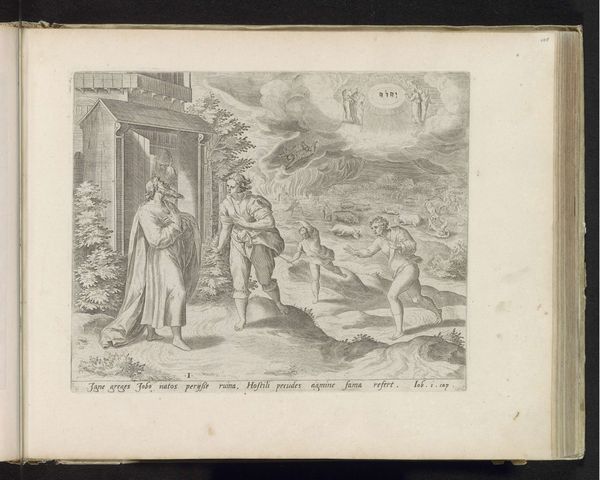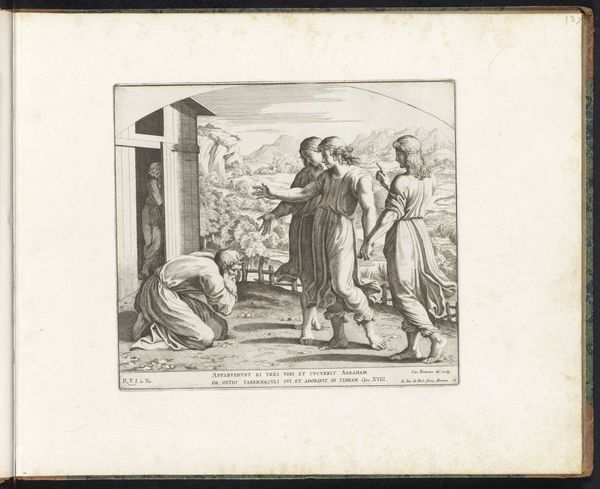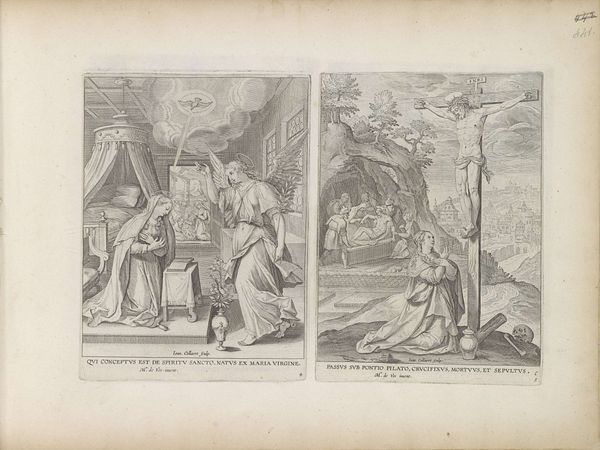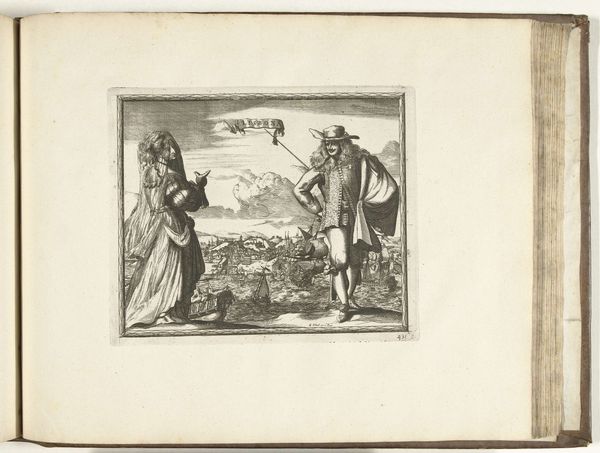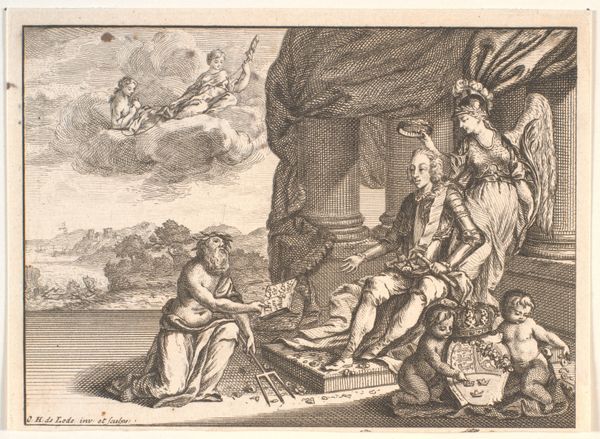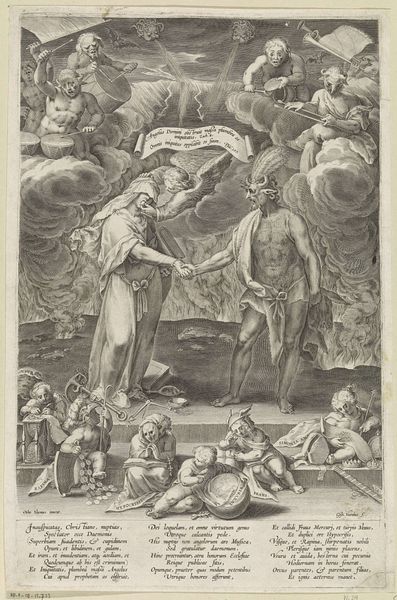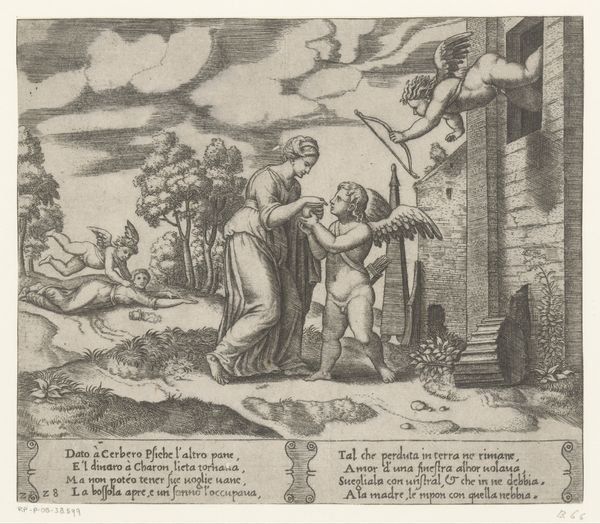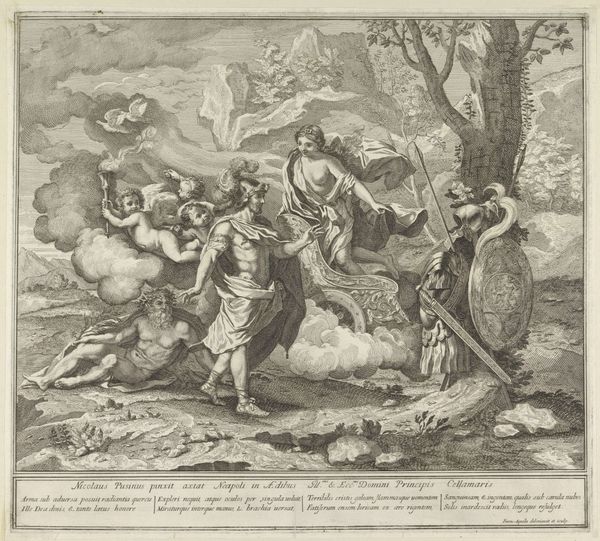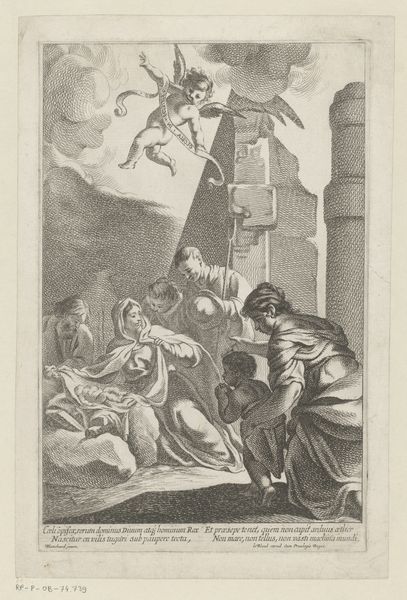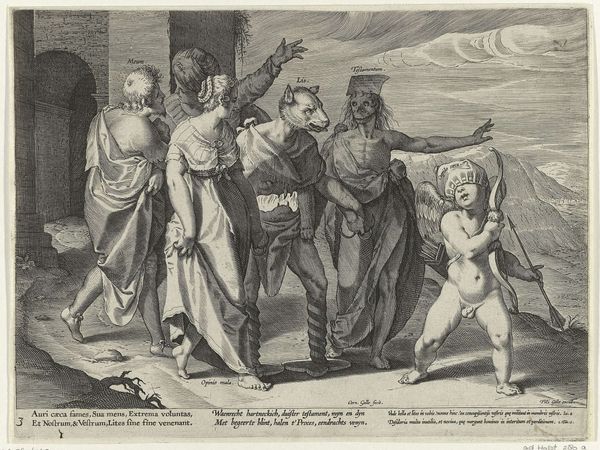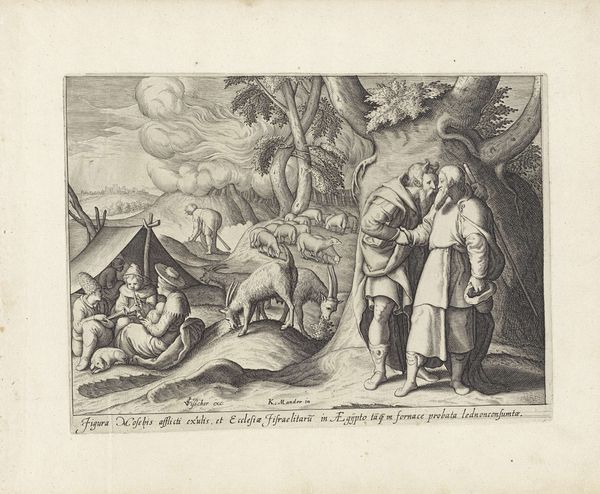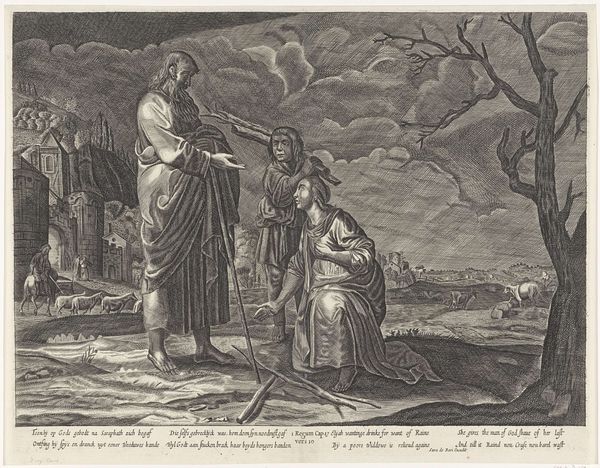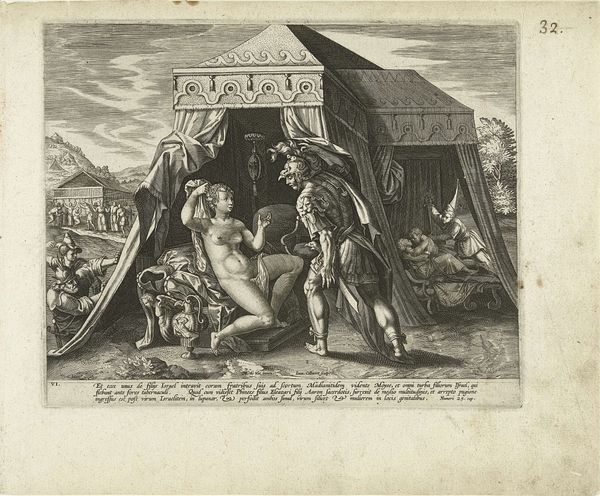
print, engraving
#
narrative-art
# print
#
mannerism
#
history-painting
#
engraving
Dimensions: height 215 mm, width 266 mm
Copyright: Rijks Museum: Open Domain
This engraving by Jan Snellinck, dating back to the late 16th or early 17th century, depicts Job receiving terrible news. Notice the messengers, each bearing tidings of destruction—the loss of livestock, servants, and even his children. The most striking symbol here is Job's posture, his hands clasped in a gesture of grief and resignation. We see this gesture echoed across cultures, from ancient Roman mourning figures to Renaissance depictions of the Virgin Mary in sorrow. It speaks to a universal human experience of loss. It transcends time, reappearing in diverse artistic traditions, each time nuanced by its specific cultural and historical context. Consider, too, the divine presence looming above, a reminder of the powers at play. The name of God hovers, and angels surround it, a direct connection to the cause of Job’s grief. The cyclical nature of this symbol allows us to understand its cultural evolution. It began perhaps as a way to represent despair or resignation, and has resurfaced, evolved, and taken on new meanings in different historical contexts.
Comments
No comments
Be the first to comment and join the conversation on the ultimate creative platform.
